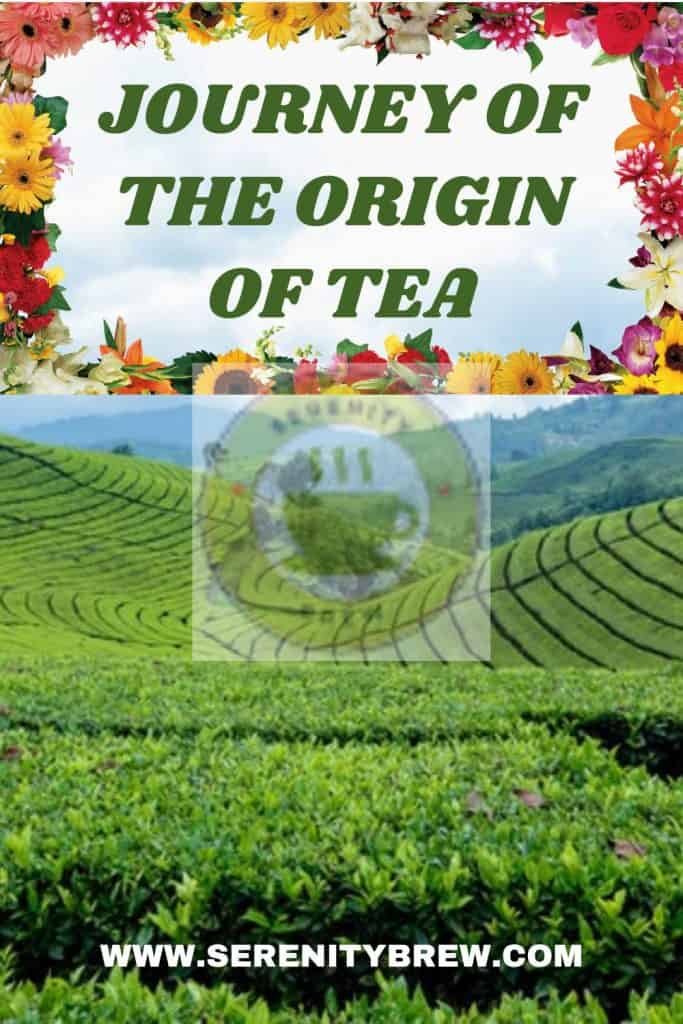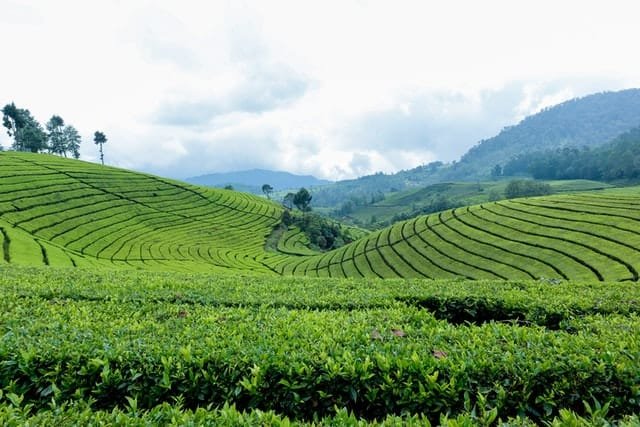
When talking about the origin of the tea we drink, we generally think of countries like China, India, and perhaps Japan. However, there are many more places where tea is grown and some are little known.
Tea is the second most consumed beverage in the world, only behind water. Providing for all these people requires the production of thousands of tons per year. Let’s see below where they are produced, what characteristics they have and where they end up being drunk.
Brief history of the origin of tea
It is said that the custom of drinking tea originated in China around 2737 BC. Legend has it that an Emperor sat peacefully under a tree while a servant boiled water.
The breeze that was blowing made some leaves fall into the water and the plant turned out to be our beloved Camellia sinensis, the tea tree. The Emperor was surprised by the exquisite taste of the concoction and decided to get into the habit of drinking it.
Of course, there are countless variations on the origin story of tea.
Tea spread throughout the area and was introduced to Japan around the 8th century by Buddhist missionary monks. The custom of drinking tea spread in the West at the hands of the English in colonial times. Tea is also a popular drink in Middle Eastern cultures, where it came through trade along the Silk Road.
The largest tea producers in the world
China
An FAO report indicates that China is the largest producer of tea in the world, with almost 40% of world production, where it stands out mainly for its green tea. The reality is that this country produces a huge variety of teas, but among the most famous and appreciated we can find:
- Green tea: The best known with Longjing, Bi Luo Chun, Huang Shan Mao Feng and Liv An Gua Pian. But keep in mind that China produces a lot of different green teas that stand out for their complex flavors and low price compared to Japanese green teas. This does not imply low quality, but rather that the investment in labor is less than that of the neighboring country.
- Oolong tea: China is also the origin of oolong tea. The two varieties of this famous Chinese tea are Tieguanyin and Da Hong Pao. The former is considered the quintessential Chinese oolong tea, while the latter comes from bushes so old that they have made it one of the most expensive teas in the world. In fact, 1,400 dollars have been paid for each gram of this tea.
- Yellow Tea: Junshan Yinzhen is an example of the rare Chinese yellow teas. It is a tea with little production, something that makes it a difficult option to obtain and expensive to buy. It stands out for its sweet taste.
- White tea: white teas are usually preferred by the most experienced tea drinkers, precisely because of their complexity of flavors and aromas. In particular, Bai Hao Yin Zhen, one of the most famous Chinese white teas, is of the highest quality, with a sweet and vegetal aroma and flavor.
- Pu-erh or red tea: This fermented tea has a dense body and an earthy flavor, making it an exotic choice and highly appreciated by connoisseurs.
- Black tea: China also produces a multitude of black teas, although the name they use to refer to them, unlike in the West, is red tea. Keemun is a Chinese black tea considered among the best Chinese teas due to its delicate yet complex flavor.
India
India is one of the historical origins of tea and the second largest producer in the world. According to statistics from the International Tea Committee, tea production in India and China accounts for approximately 60% of the tea produced worldwide.
In India tend to tend to the development of black tea. One of the most classic Indian teas is Darjeeling, which has a special certification to certify its origin and corroborate its high quality.
Besides, the country is a great consumer of tea. It can be said that tea is the official drink in India. Chai tea originated in India and is a mixture of tea, spices, milk and sugar. A powerful combination, tailored to Indian palates.
Kenya
Did you know that tea production is one of the country’s main sources of income? Although the African country is best known for its coffee industry, it is the origin of black tea used in many blends for its fragrance and intensity.
It is the world’s third largest exporter of black tea, in addition to also producing green, white and yellow teas to a lesser extent.
Kenyan black tea is of good quality but is often used to produce blends of various qualities, making it difficult to analyze in this regard.
Sri Lanka
Sri Lanka’s humid climate and temperatures are ideal for the production of high-quality teas. The most produced and exported in the region is black tea, which is consumed alone or in blends (especially within the famous English Breakfast) and is sold mainly to the United Arab Emirates, Russia, Turkey, Saudi Arabia and the United Kingdom.
Japan
Japan is one of the cradles of origin of tea and one of the countries with the highest consumption per capital. The cultivation of this plant in the country dates back to ancient times, when Buddhist monks imported it on their pilgrimages to neighboring China.
Today, the production of tea on the islands is important but does not have large extensions. Land and labor in Japan are expensive and there is a tendency to produce select teas in low volumes.
Almost all Japanese production is green tea: matcha, sencha and genmaicha are three of the most famous options. Gyokuro, also green, is perhaps the best variety produced in the country along with matcha.
Other producers
There are many countries that produce teas worldwide, beyond those on which we have elaborated a little previously, among them:
- Vietnam: its most famous tea is green, although white and oolong are also grown. However, the Vietnamese specialty is lotus tea and other flower varieties, such as jasmine tea.
- Taiwan: stands out for its high mountain oolongs that are considered among the best in the world.
- Turkey: walking through its markets it is easy to find all kinds of powdered teas that are consumed as part of the infusion. Not only is it the largest producer in the Middle East, it is also a major consumer.
Of course, there are more producing countries, although to a lesser extent, such as Indonesia, Rwanda, South Africa and even Argentina.
The world’s largest tea drinkers
In total figures, the main consumers of tea in the world are in Asia. These countries are the origin of tea and its consumption is an inseparable part of their culture and tradition.
China heads the list, with a consumption of 1,614,000 tons per year, followed by India, with a consumption of 1,001,000 tons. According to data from the International Tea Committee, Japan has an annual consumption of 119,000 tons.
In the Western world, the highest consumption of tea is found in the European Union as a whole, specifically the 116,000 tons consumed by the United Kingdom in 2013. Although this consumption seems high, it is also worth mentioning the 127,000 tons consumed by the United States. United States and 159,000 in Russia during the same period.
Despite these data, the perspective changes significantly if we look at per capita consumption. According to data from Statista, a global statistics portal, the annual world consumption per capita is ordered as follows.
- Turkey: 3.16 kg per person per year.
- Ireland: 2.19 kg per person per year.
- United Kingdom: 1.94 kg per person per year.
- Russia: 1.38 kg per person per year.
- Morocco: 1.22 kg per person per year.
The future of the tea world

The Food and Agriculture Organization of the United Nations has indicated in a report that world production of black tea will increase by 2.2% over the next decade, reaching around 4.4 million tons for the year. 2027, mainly in China, Sri Lanka and Kenya (the world’s largest exporter of black tea).
And what will happen to green tea? The same study maintains that its growth at the production level will be even more marked (7.5% per year), reaching 3.6 tons for the same year. And who will be the biggest producer in this case? It is expected to be China, where production would reach 3.3 million tons.
